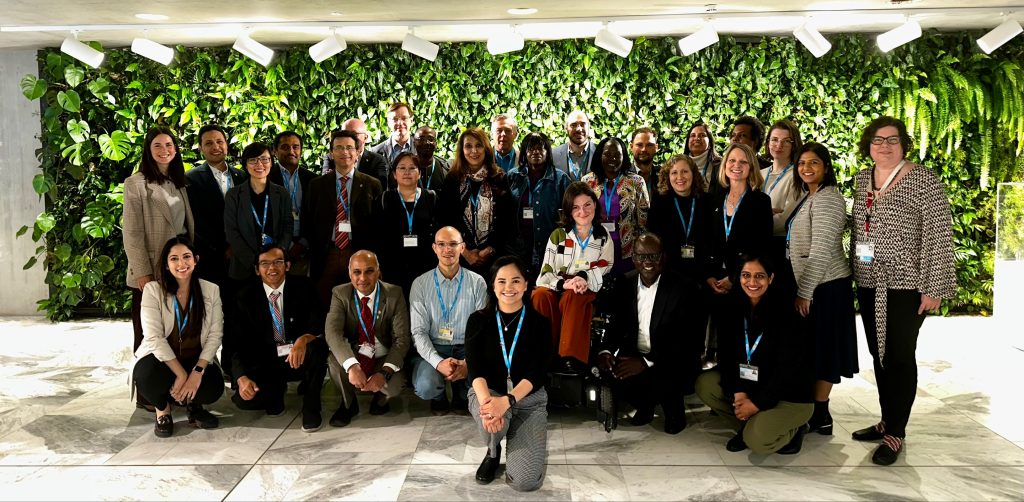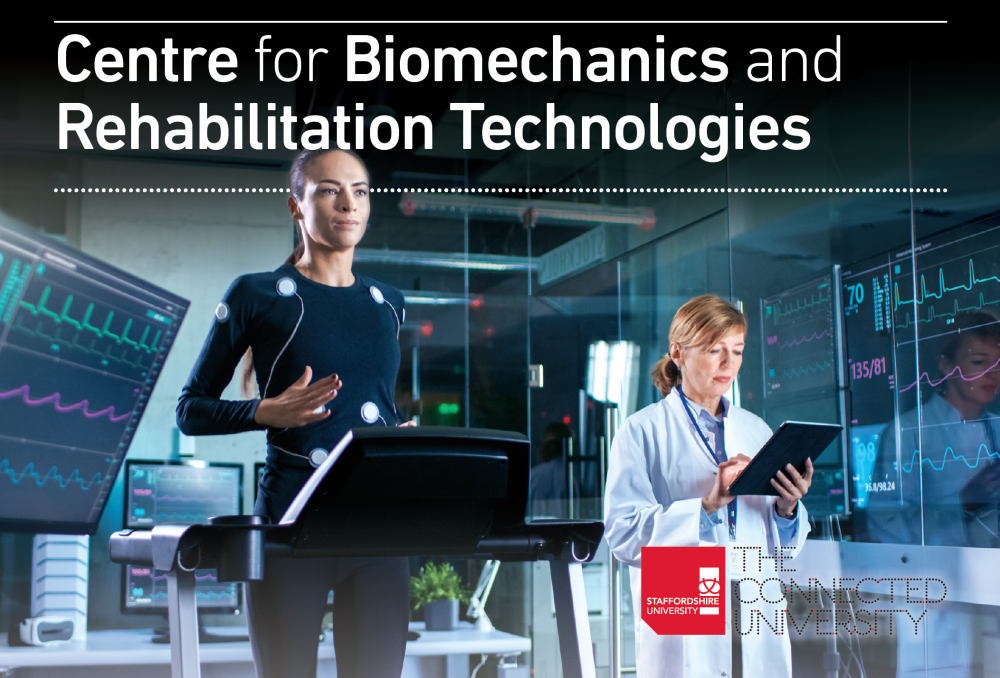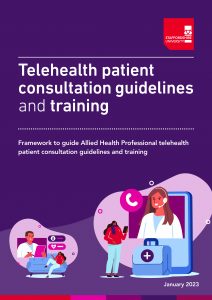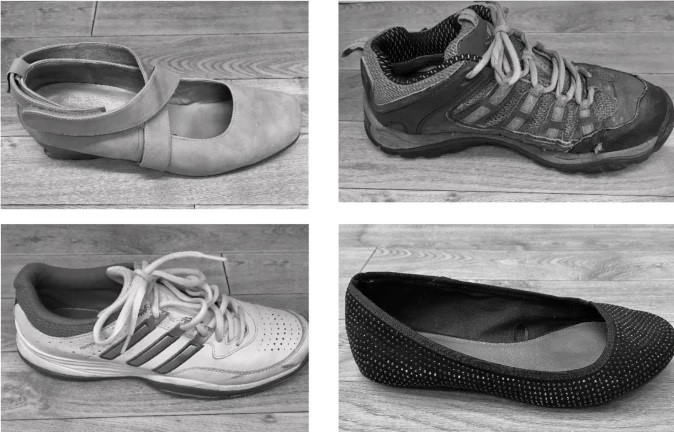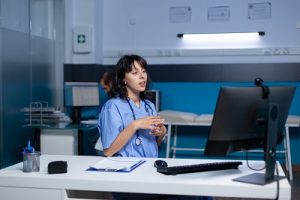Allied Health Professionals (AHPs) make up the third largest healthcare workforce in the UK National Health Service (NHS) and play a vital role in the health and care of patients. However, new research shows that current telehealth guidelines and training programmes for AHPs are not sufficiently comprehensive and lack information on key telehealth aspects.
A program of work, conducted by a team of researchers at Staffordshire University, found that many AHPs are not adequately supported in the delivery of remote patient consultations. This is a concern as telehealth has become increasingly important in the current climate, with the pandemic forcing many healthcare providers to shift to remote consultations.
Based on these studies a policy brief has been created in partnership with various stakeholders to guide the creation of telehealth patient consultation guidelines and training for AHPs.
This policy brief, which was launched on 18th January 2023 aims to outline crucial telehealth elements to consider when creating guidelines for patient consultations and to highlight areas where AHPs should receive training before conducting telehealth consultations.
Download the policy brief here.
The publications which informed this policy can be found at:
- Leone E, Eddison N, Healy A, Royse C, Chockalingam N. Exploration of implementation, financial and technical considerations within allied health professional (AHP) telehealth consultation guidance: a scoping review including UK AHP professional bodies’ guidance. BMJ Open. 2021 Dec 27;11(12):e055823. doi: 10.1136/bmjopen-2021-055823. https://bmjopen.bmj.com/content/11/12/e055823.long
This work uncovered deficiencies in current guidelines for telehealth consultations by allied health professionals (AHPs). These guidelines demonstrated both similarities and discrepancies with the guidance for non-AHP healthcare professionals. The findings indicated that the current guidelines do not provide sufficient support for AHPs to deliver telehealth consultations. It is suggested that future research and collaboration among AHP groups and leading health institutions be undertaken to develop common guidelines that will enhance AHP telehealth services.
In this study, 658 participants were surveyed (119 AHP service managers overseeing 168 AHP services, and 539 clinicians). Among the clinicians and services represented, 87.4% and 89.4%, respectively, were using telehealth consultations to deliver healthcare, and most of these services planned to continue using telehealth after COVID-19 restrictions were lifted. The most significant barrier reported by participants as impacting a patient’s ability to conduct a telehealth consultation was a lack of technological skills, followed by a lack of technology for patients. These were also identified as the primary disadvantages of telehealth for patients. Many clinicians reported that telehealth consultations reduced the cost of parking and transportation for patients attending hospital appointments. The benefits reported by clinicians included saving on travel time and costs and enabling flexible working, while the benefits to AHP services included increased flexibility for patients in how appointments are conducted and reduced potential exposure of staff to contagious diseases. We concluded that widespread adoption of telehealth in its current form in NHS AHP services may exacerbate inequalities in healthcare access for vulnerable groups with limited digital literacy or access. As a result, telehealth may be deemed inappropriate and underutilized, nullifying the potential benefits such as sustainability, patient empowerment, and reduced treatment burden. This could increase disparities in healthcare.
In this paper we examined the organizational readiness of AHP services regarding the implementation of telehealth guidelines and staff training. Results showed that UK NHS AHP services lack clear and comprehensive guidelines and the necessary skills to effectively deliver telehealth. Vulnerable individuals are excluded from current guidelines, which could exacerbate health inequalities and hinder the success of the NHS digital transformation. The lack of national guidelines underscores the need for consistent AHP telehealth guidelines.
- Eddison N, Royse C, Healy A, Leone E, Chockalingam N. Telehealth provision across allied health professions (AHP): An investigation of reimbursement considerations for its successful implementation in England. Health Sci Rep. 2022 Dec 13;6(1):e991. doi: 10.1002/hsr2.991. https://onlinelibrary.wiley.com/doi/10.1002/hsr2.991
This study investigated the potential barriers to the adoption of telehealth posed by differences in the NHS tariff. To understand the effect of these changes on reimbursement for AHP telehealth consultations because of the pandemic, a Freedom of Information (FOI) request was sent to all Clinical Commissioning Groups (CCGs) in England in April 2021, to request information on the current tariffs for face-to-face and telehealth consultations for AHP services. Findings showed significant variations across the NHS in England, with some CCGs paying the same amount regardless of the mode of delivery, some paying 6.5 times more for in-person consultations, and only a few paying more for telehealth consultations.
